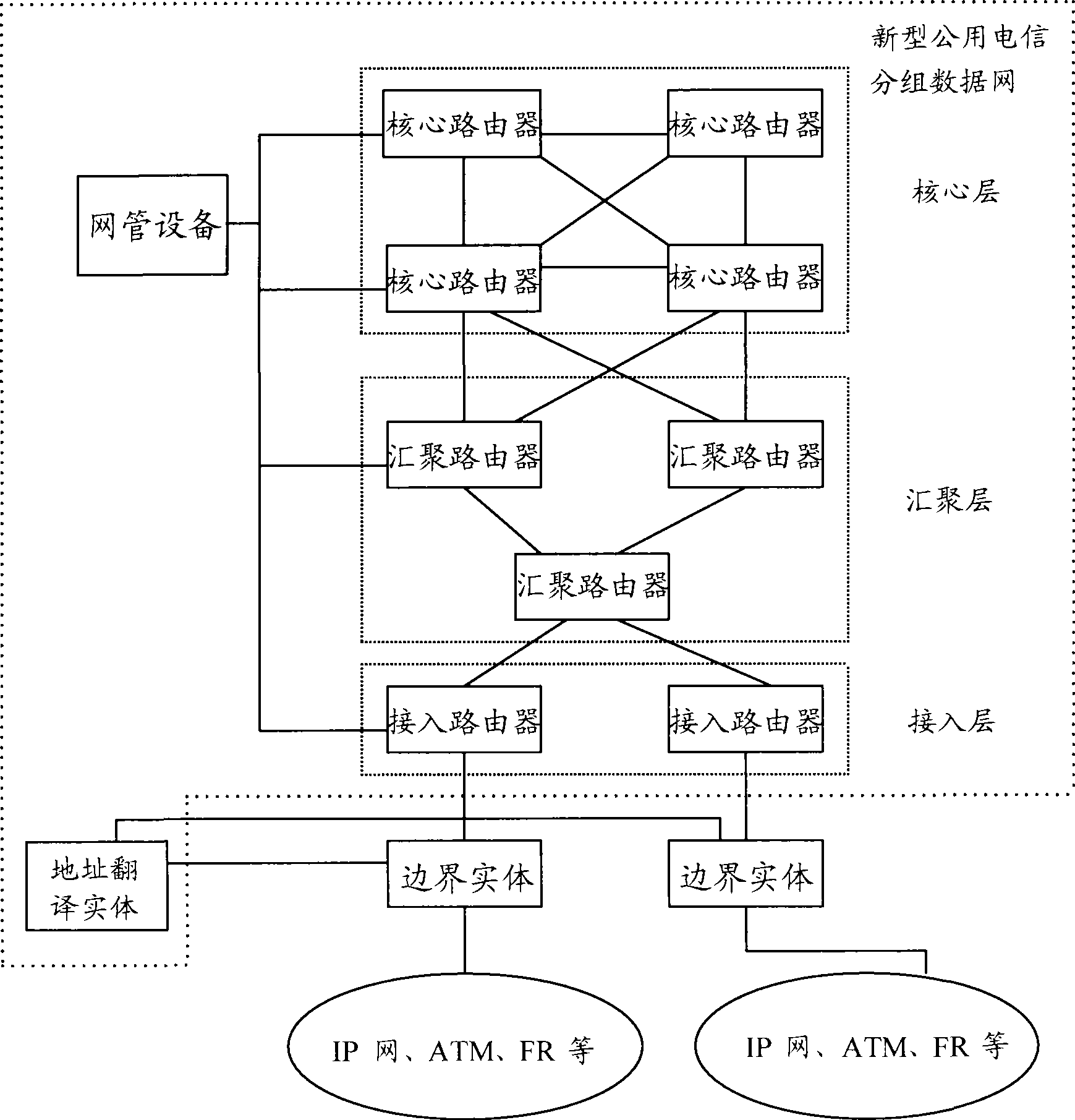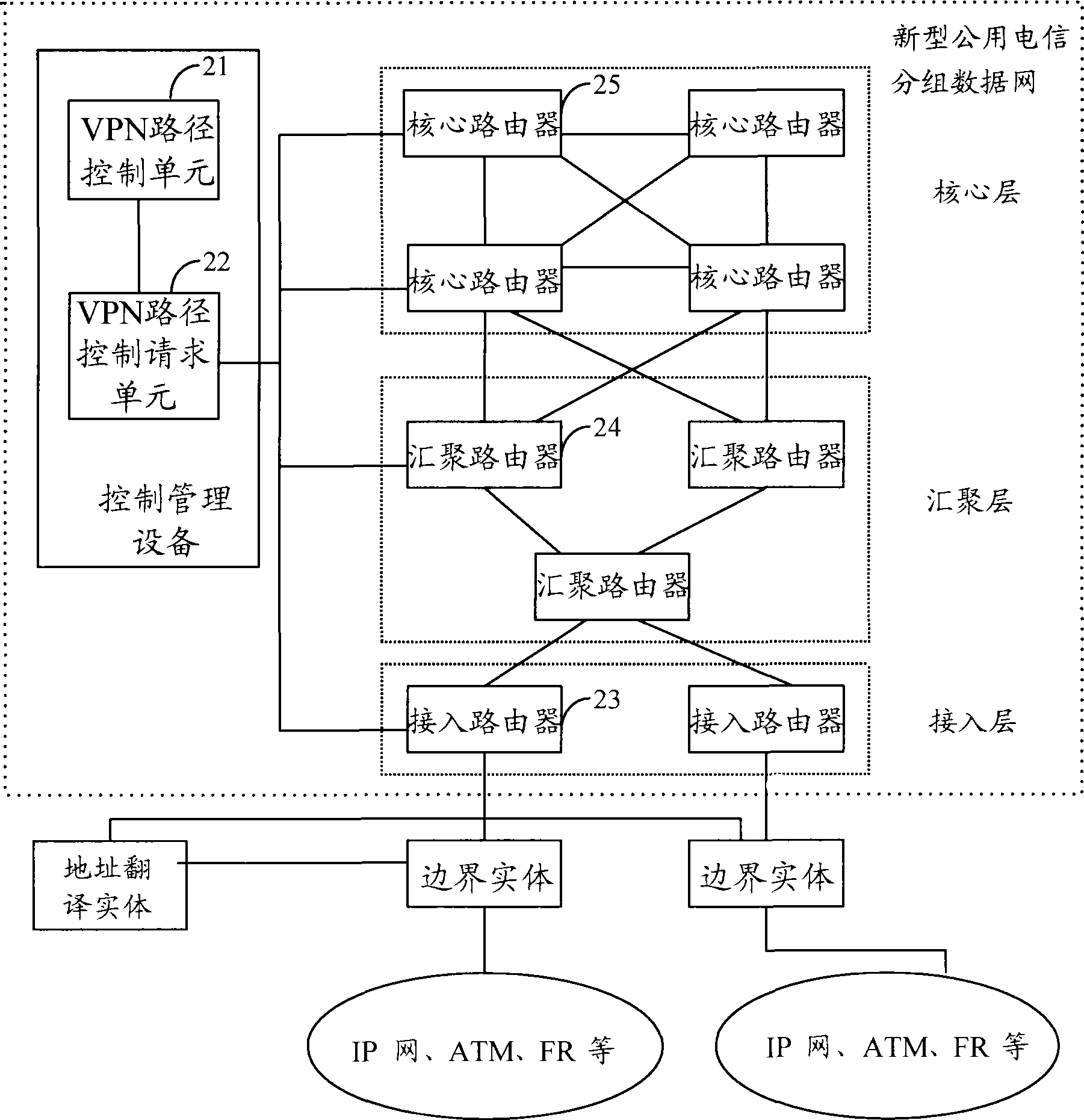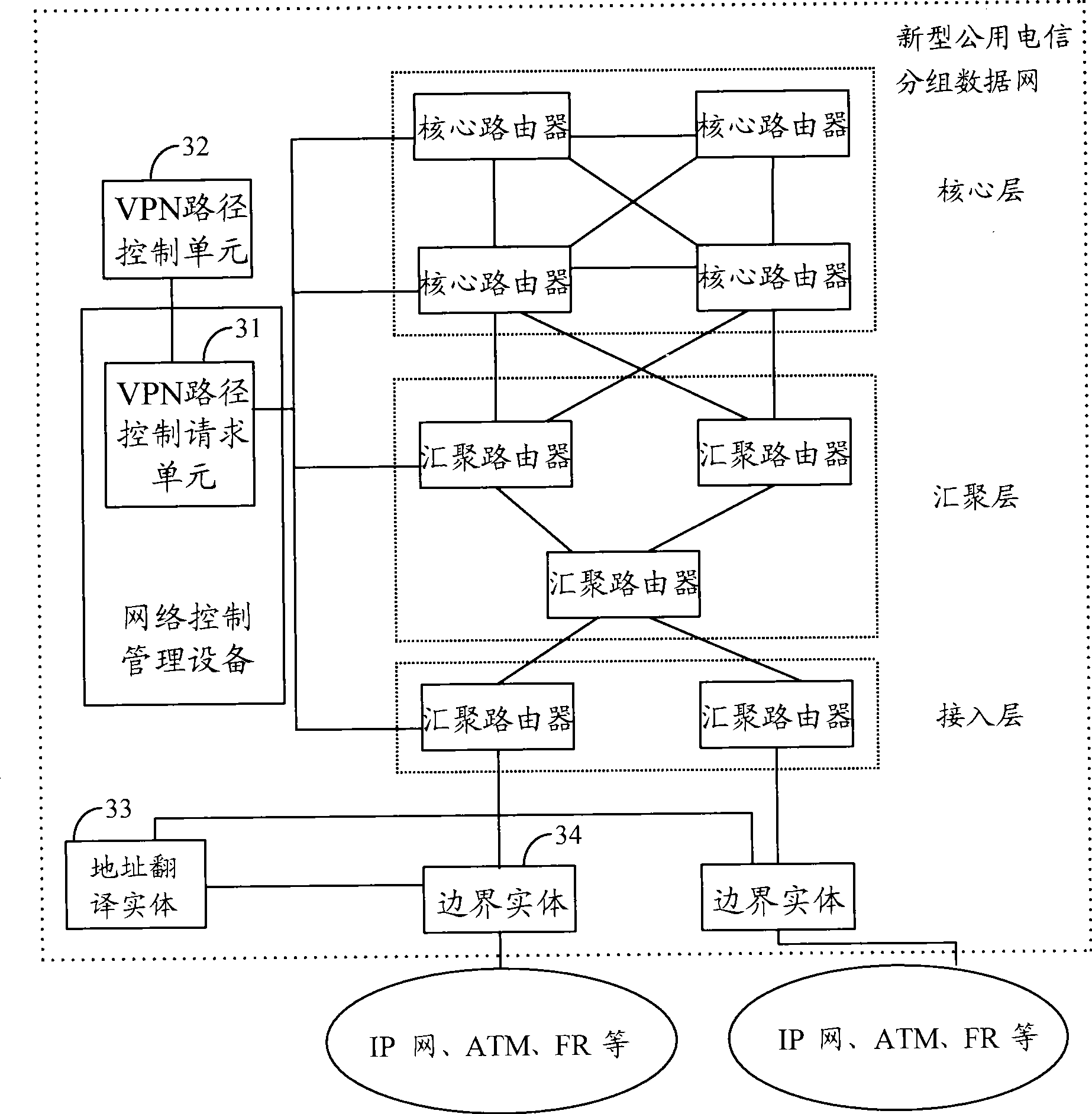Path control system and method for layering ordered address grouping network
A path control and grouping network technology, applied in the network field, can solve the problems of no dynamic VPN tunnel control, calculation, management methods, labor-consuming, error-prone, etc., and achieve the goal of improving path control efficiency, reliability and stability Effect
- Summary
- Abstract
- Description
- Claims
- Application Information
AI Technical Summary
Problems solved by technology
Method used
Image
Examples
Embodiment Construction
[0025] The embodiment of the present invention is to provide a VPN and multicast path control system and method for a layered and ordered address grouping network, which is used to provide a dynamic path control method for a hierarchical and orderly address grouping network to realize VPN, multicast Dynamic centralized control of paths.
[0026] Refer to the attached figure 2 A specific implementation manner of the hierarchical and sequential address packet network (HSAPN, Hierarchical and Sequential Address Packet Network) path control system of the present invention will be described, and the embodiment will be described by taking the control and calculation of the VPN path as an example.
[0027] As shown in the figure, the new public telecommunications packet data network is a specific hierarchical and orderly address packet network. The embodiment of the present invention takes the new public telecommunications packet data network as an example, including: VPN path contr...
PUM
 Login to View More
Login to View More Abstract
Description
Claims
Application Information
 Login to View More
Login to View More - R&D
- Intellectual Property
- Life Sciences
- Materials
- Tech Scout
- Unparalleled Data Quality
- Higher Quality Content
- 60% Fewer Hallucinations
Browse by: Latest US Patents, China's latest patents, Technical Efficacy Thesaurus, Application Domain, Technology Topic, Popular Technical Reports.
© 2025 PatSnap. All rights reserved.Legal|Privacy policy|Modern Slavery Act Transparency Statement|Sitemap|About US| Contact US: help@patsnap.com



